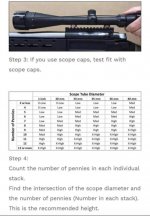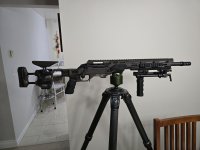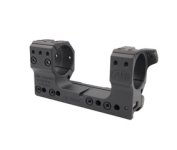I sent a post to affirm MY retirement, however a complete complex screening of new "service toys/with accessories" have been pressure tested in diverse field environments and index.
Join the Hide community
Get access to live stream, lessons, the post exchange, and chat with other snipers.
Register
Download Gravity Ballistics
Get help to accurately calculate and scope your sniper rifle using real shooting data.

Install the app
How to install the app on iOS
Follow along with the video below to see how to install our site as a web app on your home screen.
Note: This feature may not be available in some browsers.
You are using an out of date browser. It may not display this or other websites correctly.
You should upgrade or use an alternative browser.
You should upgrade or use an alternative browser.
Rifle Scopes Ring Height Info - How to Measure Correctly
- Thread starter mdmp5
- Start date
Why might it matter on a .50 cal?Re: Ring Height Questions
The above is taking into account the butler creek caps. The ones i have are aprox .035-.040 thick and get thinner when stretched over the scope. I have been known to sand down butler creek caps to allow the use of lowest possible rings...
Clearance is just that, it doesn't matter if you have 1/16 inch or a foot, its still clearance. On a .50 cal it might matter...
Thank you for the information!Guys,
Lately, on average of about 1 per day, I have seen quite a few posts (mostly from newbies) regarding questions about what ring height should be used. They usually request pics for comparison. For all new guys, there is a systematic way of calculating ring height that doesn't require more than a simple elementary school ruler. You measure 3 things:
1. the height of the front of your base/rail from the barrel
2. the height of your rings from the top of the rail to centerline
3. the outside diameter of the bell of the scope (not the size of the objective lens)
Here is the equation:
[rail height + ring height] - [bell diameter x 0.5]
If the value is positive, then your bell will clear the barrel. Ideally, you want that bell to be about 1/4" or less over the barrel. This will give you a tight cheek weld. Be sure to account for Butler Creek caps if you intend on using them.
If you are using a 40mm objective, then you can use the lowest rings and bases available, as the bell will certainly clear the barrel with no problem. i.e. don't worry if the bell ends up being higher than 1/4" over the barrel.
Hope this helps.
mike
Just another note. If you are using a scope base and/or mount/rings that have built in elevation, that may have to be accounted for in the case of very small clearance. To calculate this, we need to know the amount of elevation built into the mount/rings and/ or base, and the length from the end of the scope base to the end of the scope bell. Convert MOA into degrees, and then the equation is:
Tan ? x length
For example, if you are using a 20 MOA base, and the distance from the edge of the scope base to the end of the bell is 5". 20 MOA = 0.333 degrees, so:
Tan 0.333 x 5 = 0.029"
This means that you need an extra 0.029" of clearance in addition to the calculation above
-mp
I am looking for some help, and yes, I saw the calculator  I am in the process of putting together the final pieces of my rifle and I am trying to place an order for scope rings, but I'm struggling with the height requirement. Rifle is a R700 with a Bartlein 3B barrel and I am adding a 20MOA Area 419 Rail, which I don't have yet. My scope is a Nightforce SHV with a 50MM objective (should be 59MM OD) which I would like to put in ARC M-Brace rings.
I am in the process of putting together the final pieces of my rifle and I am trying to place an order for scope rings, but I'm struggling with the height requirement. Rifle is a R700 with a Bartlein 3B barrel and I am adding a 20MOA Area 419 Rail, which I don't have yet. My scope is a Nightforce SHV with a 50MM objective (should be 59MM OD) which I would like to put in ARC M-Brace rings.
I can account for the scope (29.5MM) + I am using 2MM for cap thickness so that puts me at 31.5MM or 1.24 inches. I don't know the rail thickness as I don't have it yet, but it looks like I am at the high ring mark (excluding barrel taper & 20 MOA rail). This feels off based upon what others are saying but I know the math is right, obviously excluding a few key factors. I am trying to have everything ordered together.
Anyone with a similar setup or insight?
I can account for the scope (29.5MM) + I am using 2MM for cap thickness so that puts me at 31.5MM or 1.24 inches. I don't know the rail thickness as I don't have it yet, but it looks like I am at the high ring mark (excluding barrel taper & 20 MOA rail). This feels off based upon what others are saying but I know the math is right, obviously excluding a few key factors. I am trying to have everything ordered together.
Anyone with a similar setup or insight?
When measuring the distance between the center of the rifle bore and the center of the scope do you measure from the back of the scope the center or front to get your distance
Windage knob to get height above bore for ballistic program.When measuring the distance between the center of the rifle bore and the center of the scope do you measure from the back of the scope the center or front to get your distance
Thanks
I had to trim one picatinny lug’s worth of rail in order to mount 50 and even 44mm bells far enough back for proper eye relief. Thankful that i had Brownells Alumablack and Ampho Blue on hand.Re: Ring Height Questions
<div class="ubbcode-block"><div class="ubbcode-header">Originally Posted By: Fritz24</div><div class="ubbcode-body">I have no problems with bell/barrel clearance - but as we speak am having a mounting issue where the scope's bell is making contact with the forward end of the 20MOA base(a Seekins base as it happens). I can't get the scope back far enough for proper relief without contact with low or medium rings on my 700P. (Scope is 10x40 SS)
Is it just me? </div></div>
I personally havent heard of this problem. It may come down to you needing a different mount. Maybe Glen or someone will chime in with a solution.
Anyone running an AI AX Sa. With zvo 5x27 and arc mount? Wondering what clearance is like with their shortest mount. Like to have it as low as possible.
Only 15 years late to this post, but I find I have to figure in another factor...neck length. I have a long neck and find I need the highest rings/mount I can get or else I'm crushing whats left of my vertabrae trying to get down to eye level for the scope. If theyre a bit high its easier to stretch said neck than compress it.
Some of you no neck guys built like cinderblocks dont seem to have the problem.
Some of you no neck guys built like cinderblocks dont seem to have the problem.
Guys,
Lately, on average of about 1 per day, I have seen quite a few posts (mostly from newbies) regarding questions about what ring height should be used. They usually request pics for comparison. For all new guys, there is a systematic way of calculating ring height that doesn't require more than a simple elementary school ruler. You measure 3 things:
1. the height of the front of your base/rail from the barrel
2. the height of your rings from the top of the rail to centerline
3. the outside diameter of the bell of the scope (not the size of the objective lens)
Here is the equation:
[rail height + ring height] - [bell diameter x 0.5]
If the value is positive, then your bell will clear the barrel. Ideally, you want that bell to be about 1/4" or less over the barrel. This will give you a tight cheek weld. Be sure to account for Butler Creek caps if you intend on using them.
If you are using a 40mm objective, then you can use the lowest rings and bases available, as the bell will certainly clear the barrel with no problem. i.e. don't worry if the bell ends up being higher than 1/4" over the barrel.
Hope this helps.
mike
Just another note. If you are using a scope base and/or mount/rings that have built in elevation, that may have to be accounted for in the case of very small clearance. To calculate this, we need to know the amount of elevation built into the mount/rings and/ or base, and the length from the end of the scope base to the end of the scope bell. Convert MOA into degrees, and then the equation is:
Tan (theta) x length
For example, if you are using a 20 MOA base, and the distance from the edge of the scope base to the end of the bell is 5". 20 MOA = 0.333 degrees, so:
Tan 0.333 x 5 = 0.029"
This means that you need an extra 0.029" of clearance in addition to the calculation above
-mp
Ok. Using a ring calculator, I have a 64mm outside objective diameter, 3mm for tenebraex cap, 20 MOA rail, and 0 rail to barrel clearance as the top is all rail. Using a 38 mm / 1.5 inch ring height it says I have 2.06 mm clearance. March 5x42 HighMaster 34mm scope and Cadex Covert rifle. I can get a deal on a Spuhr 4602 with 20MOA built in for a reasonable price. The example above is almost bang on that I would need .029 extra clearance which is 0.7366mm. Giving me a grand total of 1.32 mm clearance. Am I cutting it too close? Should I pull the trigger with these calculations as they are expensive rings that cant be returned. Any input appreciated. Thanks.Guys,
Lately, on average of about 1 per day, I have seen quite a few posts (mostly from newbies) regarding questions about what ring height should be used. They usually request pics for comparison. For all new guys, there is a systematic way of calculating ring height that doesn't require more than a simple elementary school ruler. You measure 3 things:
1. the height of the front of your base/rail from the barrel
2. the height of your rings from the top of the rail to centerline
3. the outside diameter of the bell of the scope (not the size of the objective lens)
Here is the equation:
[rail height + ring height] - [bell diameter x 0.5]
If the value is positive, then your bell will clear the barrel. Ideally, you want that bell to be about 1/4" or less over the barrel. This will give you a tight cheek weld. Be sure to account for Butler Creek caps if you intend on using them.
If you are using a 40mm objective, then you can use the lowest rings and bases available, as the bell will certainly clear the barrel with no problem. i.e. don't worry if the bell ends up being higher than 1/4" over the barrel.
Hope this helps.
mike
Just another note. If you are using a scope base and/or mount/rings that have built in elevation, that may have to be accounted for in the case of very small clearance. To calculate this, we need to know the amount of elevation built into the mount/rings and/ or base, and the length from the end of the scope base to the end of the scope bell. Convert MOA into degrees, and then the equation is:
Tan (theta) x length
For example, if you are using a 20 MOA base, and the distance from the edge of the scope base to the end of the bell is 5". 20 MOA = 0.333 degrees, so:
Tan 0.333 x 5 = 0.029"
This means that you need an extra 0.029" of clearance in addition to the calculation above
-mp
What's the application?
Use whatever ring height feels comfortable, especially if you have a stock/chassis with an adjustable cheek piece. To echo Maggot's statement, why screw up your neck if you don't have to?
Here's just one of several videos on the subject:
To the "newbies": take whatever dose of Ritalin necessary to address your ADHD and watch the entire video.
Use whatever ring height feels comfortable, especially if you have a stock/chassis with an adjustable cheek piece. To echo Maggot's statement, why screw up your neck if you don't have to?
Here's just one of several videos on the subject:
To the "newbies": take whatever dose of Ritalin necessary to address your ADHD and watch the entire video.
Ok. Using a ring calculator, I have a 64mm outside objective diameter, 3mm for tenebraex cap, 20 MOA rail, and 0 rail to barrel clearance as the top is all rail. Using a 38 mm / 1.5 inch ring height it says I have 2.06 mm clearance. March 5x42 HighMaster 34mm scope and Cadex Covert rifle. I can get a deal on a Spuhr 4602 with 20MOA built in for a reasonable price. The example above is almost bang on that I would need .029 extra clearance which is 0.7366mm. Giving me a grand total of 1.32 mm clearance. Am I cutting it too close? Should I pull the trigger with these calculations as they are expensive rings that cant be returned. Any input appreciated. Thanks.
This rifle below? It's a flat top so you will need something in the 1.5" height whether ring or mount.
Hi. Yes that is the rifle as I will mainly be shooting from a tripod as below ...it's a cross over gun hunting/range/SHTF . Lots of adjustments to make it fit as an extension of the body. Only concerned with it clearing the rail and the additional 20 MOA on the mount. 20-30 MOA is good for this scope as it packs a lot of magnification in a small package and you will get IQ degradation at the outer limits of the magnification range. I would want to be looking through the centre of the lens as much as possible. It may seem a bit of overkill on the magnification for this rifle and therefore the problem with 64mm outside objective diameter but I want to clearly identify game at 1000 yrds and see groupings at 500 yrds.This rifle below? It's a flat top so you will need something in the 1.5" height whether ring or mount.
View attachment 8510845
A 20MOA rail will shift the adjustment range by about 5.7MIL to 25.7MIL up and 14.3MIL down.
A 30MOA rail will shift the adjustment range by about 8.6MIL to 28.6MIL up and 11.4MIL down.”
Perhaps 40 MOA is a little much?
- CantileverNo
- ColorBlack Hardcoat Anodized
- Height38 mm
- Quick ReleaseNo
- Rail/TypePicatinny
- Tilt6 MIL/20.6 MOA
- Tube Diameter34 mm
Attachments
I think Dark Lord of Optics has expressed some opinion on SPUHR and other manufacturers. It might be worth a visit to his posts:
My experience with SPUHR mounts is mixed. I've owned several and most would hold a scope without leaving ring marks or rotating the scope during installation. I did have two which pinched the scope and caused rotation during installation and left ring marks (I always follow the installation instructions to the letter).
There is some conjecture about the type of screws used by some manufacturers with claims that mounts using screws with countersunk heads (such as those on the SPUHR) are problematic since the top cap of the ring is forced to align itself with the taper or the screw head instead of the scope tube or something to that affect while those mounts using cap head screws don't tend to have this issue.
I don't own any SPUHR mounts currently. I do have several mounts from Masterpiece Arms, none of which have any of the issues listed above. I can't say for sure this is because they use cap head screws or are machined more precisely or what.
Check out the vids from MPA and AREA 419:
Fortunately, you have many great options to choose from.
My experience with SPUHR mounts is mixed. I've owned several and most would hold a scope without leaving ring marks or rotating the scope during installation. I did have two which pinched the scope and caused rotation during installation and left ring marks (I always follow the installation instructions to the letter).
There is some conjecture about the type of screws used by some manufacturers with claims that mounts using screws with countersunk heads (such as those on the SPUHR) are problematic since the top cap of the ring is forced to align itself with the taper or the screw head instead of the scope tube or something to that affect while those mounts using cap head screws don't tend to have this issue.
I don't own any SPUHR mounts currently. I do have several mounts from Masterpiece Arms, none of which have any of the issues listed above. I can't say for sure this is because they use cap head screws or are machined more precisely or what.
Check out the vids from MPA and AREA 419:
Fortunately, you have many great options to choose from.
When I was setting up my RPR a while back someone directed me to purchase a set of Burris ring. In the set it came with shims. Not knowing anything about mounting the scope a person recommended putting a + shim on the rear and a - shim in the front. This I guess tilts my optic slightly down in the front. Not noticeable to the naked eye. My question is will this affect my DOPE calculations not following the basic bullet drop calls that Frank teaches. Any help or advice thoughts???
Nope your dope calculations will stay the same. You'll just be able to dial even furtherWhen I was setting up my RPR a while back someone directed me to purchase a set of Burris ring. In the set it came with shims. Not knowing anything about mounting the scope a person recommended putting a + shim on the rear and a - shim in the front. This I guess tilts my optic slightly down in the front. Not noticeable to the naked eye. My question is will this affect my DOPE calculations not following the basic bullet drop calls that Frank teaches. Any help or advice thoughts???
What he said. You will be able to dial further UP in elevation. Be careful not to add too thick of a shim because you will put stress on the scope.Nope your dope calculations will stay the same. You'll just be able to dial even further
I like the Burris signature rings with the nylon inserts. For some reason, the only rifles that they haven't worked on were Savage rifles. The windage was so far off that I couldn't get any addition elevation.
With that said, I have the Signature rings on a lot of my rifles. If you can get a picatinny base with a cant on it that would be the first option. If not, the Signature rings are the way to go.
In this video he talks about using the Signature rings for rimfire applications but they will work for centerfire as well.
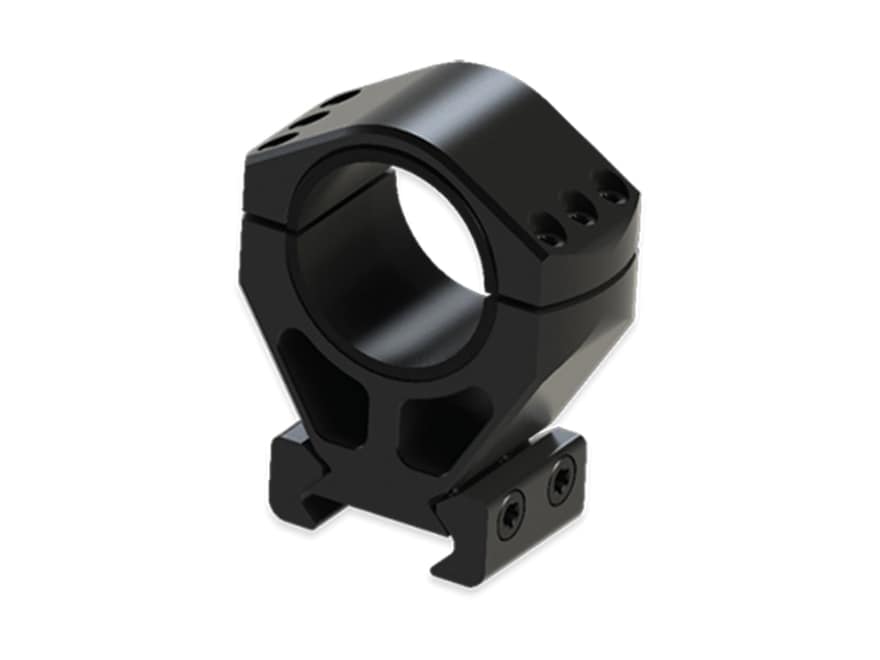
Burris 34mm Xtreme Tactical Signature Picatinny-Style Rings Matte
The Burris Xtreme Tactical Signature Rings are designed with the tactical shooter in mind. While delivering ample holding power the Xtreme...
You will note that he also talked about the FX No-Limit rings. I have these rings on some air rifles and rimfires. I think they are great for rifles that don't recoil very much. So they would be good for, heavy, small caliber centerfire rifles like a .223, .22-250, 224V or 6mm.
The disadvantage is that they are high but with my chassis equipped rifles, I can get the cheekpiece high enough that it's not a problem. They also work well with the air rifles because of the way they are designed.
This is a long video but he provides excellent information on how to install the scope rings. Even though he's got this on a rimfire rifle with a dovetail receiver, they do make them to fit on a Picatinny rail.
I don't think he emphasizes this enough but remember that whenever you are going to increase or decrease the elevation (of the rings not the scope) ALWAYS loosen the screws for both rings! Otherwise, you will be putting a strain on the scope tube. With that said the FX No-Limit rings are fantastic depending on your rifle design and application.
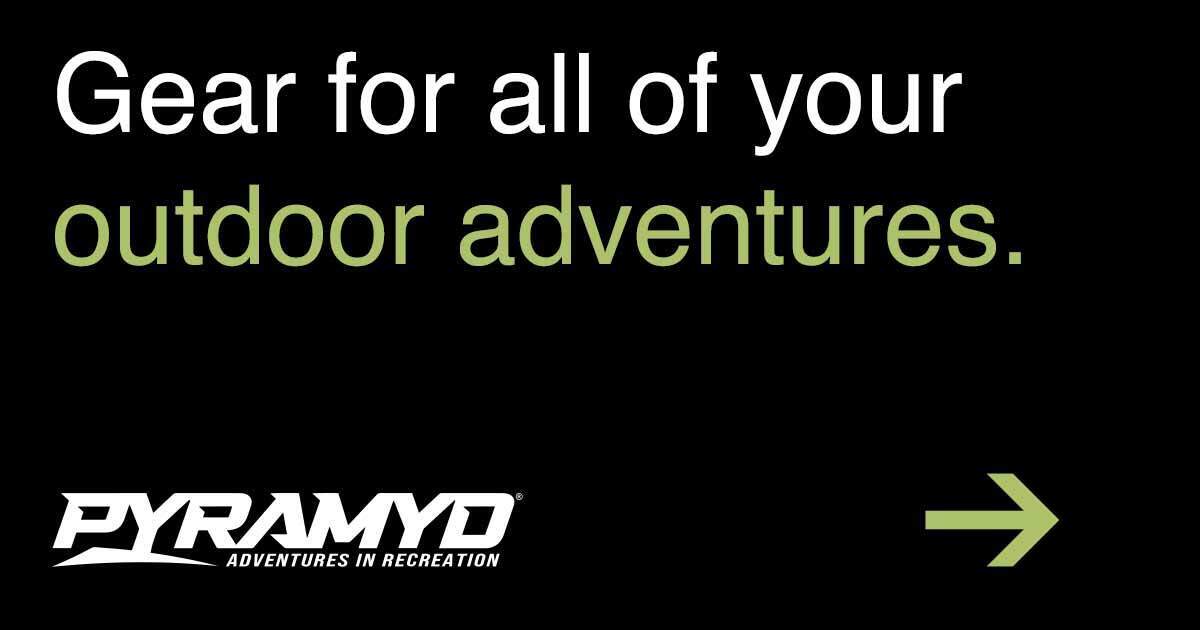
2-Piece Mounts | Pyramyd AIR
Shop 2-Piece Mounts and find great prices for your next adventure! At Pyramyd, you’ll get fast free US shipping and expert services.
www.pyramydair.com
Similar threads
- Replies
- 5
- Views
- 225
- Replies
- 0
- Views
- 61
- Replies
- 3
- Views
- 237

